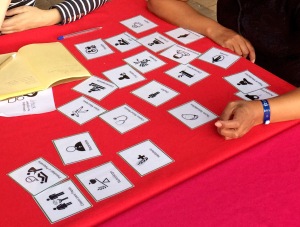Human-Centered Design for New Startup Concepts in Latin America
Polymath Ventures, based in Bogotá, Colombia, builds companies for the Latin American middle class that have the potential to scale massively. Polymath uses human-centered design to create all their business ideas from scratch. I was selected to join the 2015 Seed Fellowship as a business designer.

Objective. Our goal was to create at least one original (and financially viable) business concept that could scale and develop across Latin America, to be launched after the fellowship's end.
Approach. We followed a normal human-centered design protocol. In a team of 5, I conducted field research with about 50 middle-class Mexicans and Colombians (in Spanish, of course). After "downloading" our findings to approximately 10000000000 Post-Its (remind me to purchase stock in 3M), we developed personas and synthesized our findings into key insights and design principles that would form the foundation of our business concepts.
Next came concepting. We came up with hundreds of ideas. We birthed our idea children and then selflessly sacrificed them to the gods of market sizing and feasibility. Some of the ideas we discarded I actually saw soon after at a startup conference, which is to say that we came up with some pretty good stuff. Only the strong survived. We presented approximately 10 ideas to a team of Colombian and Mexican advisors, who helped us narrow to four ideas that would go to prototyping.

In the prototyping phase, we tested pieces of these concepts in our local markets of Bogotá and Mexico City to find out if our concepts were "Yes, I will buy that now!" or "Well, that might be nice for someone else" (which is the very polite Colombian way of saying it's terrible). With the other business designers, I worked to develop comprehensive business models to guide prototyping of the new concepts including predicted revenues, costs, and growth.
Results. As a result of prototyping, we pivoted. A LOT. Concepts twisted and turned between user feedback and financial calculations. I presented our final two concepts with the team to a group of potential investors and that was a wrap! Of the two concepts that survived, one, Mesa, was launched in 2017.